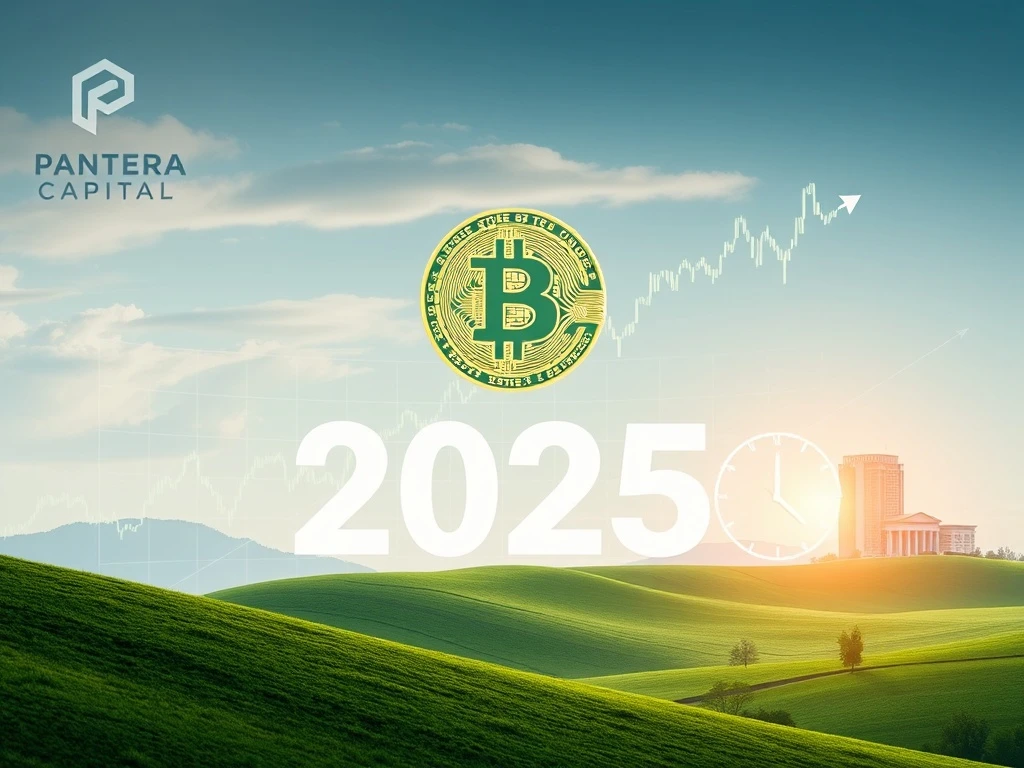Bitcoin Price: Pantera Capital’s Astounding 2025 Prediction Silences Skeptics

The cryptocurrency world often grapples with uncertainty. However, a recent event has brought a remarkable moment of clarity. Pantera Capital, a prominent blockchain investment firm, made an astonishing Bitcoin prediction in late 2022. This forecast accurately pinpointed the Bitcoin price for August 11, 2025, years in advance. This precision has reignited discussions about the enduring influence of Bitcoin halving cycles on market valuations, even as new narratives emerge.
Pantera Capital’s Remarkable Bitcoin Price Forecast
In November 2022, as Bitcoin neared its cycle bottom, Pantera Capital published a detailed price chart. This chart meticulously mapped Bitcoin’s historical halving rallies. It also demonstrated the diminishing returns observed after each four-year epoch. Consequently, the firm projected Bitcoin would reach $117,482 by August 11, 2025. This forecast seemed ambitious at the time, given Bitcoin’s sub-$16,000 trading levels. Yet, on August 11, Bitcoin remarkably closed above $119,000, according to Coin Metrics data cited by CNBC. This stunning accuracy validated Pantera’s analytical approach. An excerpt from Dan Morehead’s May 2024 Blockchain Letter further referenced this precise forecast from 2022. Bitcoin’s current trading near $120,000 represents a more than 660% surge from its 2022 low. This significant rally truly underscores the predictive power of Bitcoin’s four-year price cycles.
Understanding the Enduring Bitcoin Halving Cycle
The success of Pantera’s forecast highlights the robust nature of crypto cycles, particularly those tied to the Bitcoin halving events. These events, occurring approximately every four years, cut the reward for mining new blocks by half. Historically, this supply shock has preceded significant price rallies. The typical pattern includes:
- A post-halving rally
- A subsequent cycle peak
- A period of correction
- An accumulation phase
Many analysts, including Bob Loukas, apply similar cycle theories to forecast Bitcoin’s highs and lows. Loukas, for example, correctly identified the commencement of a new four-year cycle in January 2023. This occurred less than two months after Bitcoin reached its bottom. Such consistent patterns reinforce the idea that Bitcoin’s programmed scarcity mechanism remains a powerful driver of its market behavior. Furthermore, understanding these cycles is crucial for any comprehensive Bitcoin prediction model.
Institutional Adoption: A New Era for Crypto Cycles?
Each Bitcoin halving cycle brings fresh narratives. Often, these narratives suggest that “this time is different.” They propose that the four-year cycle pattern is destined to fade. Critics of the traditional cycle theory now have a strong point: Bitcoin has never before experienced such widespread institutionalization. Exchange-traded funds (ETFs) and major corporations now hold millions of BTC. Beginning in January 2024, the US spot Bitcoin ETFs launched, marking the most successful ETF debut in history. These ETFs currently hold 7.1% of Bitcoin’s total supply, approximately 1.491 million BTC, as reported by Bitbo. Additionally, public and private companies collectively account for another 1.36 million BTC.
Author and investor Jason Williams argues that the rise of Bitcoin treasury-holding companies signifies the end of the traditional four-year cycle. Bitcoin advocate Pierre Rochard concurs. He notes, “Halvings are immaterial to trading float, 95% of BTC have been mined, supply comes from buying out OGs, demand is the sum of spot retail, ETPs getting added to wealth platforms, and treasury companies.” This perspective suggests that institutional demand might overshadow the supply-side impact of halvings. Therefore, future crypto cycles could deviate from historical patterns. This debate adds complexity to every Bitcoin prediction.
Implications for Future Bitcoin Price Movements
The remarkable accuracy of Pantera Capital‘s forecast, rooted in cycle theory, provides compelling evidence for the continued relevance of the Bitcoin halving model. However, the burgeoning institutional involvement presents a novel variable. Will the massive inflows from spot ETFs and corporate treasuries fundamentally alter Bitcoin’s market dynamics? Or will these new demand sources simply amplify the existing cyclical patterns? This question remains central to the future of the Bitcoin price. While historical data offers strong indicators, the evolving landscape demands continuous re-evaluation. Market participants must consider both established cyclical behaviors and the profound impact of institutional adoption. Ultimately, Pantera’s success reminds us that understanding Bitcoin’s inherent design, combined with careful market analysis, can yield surprisingly accurate insights into its future trajectory.









